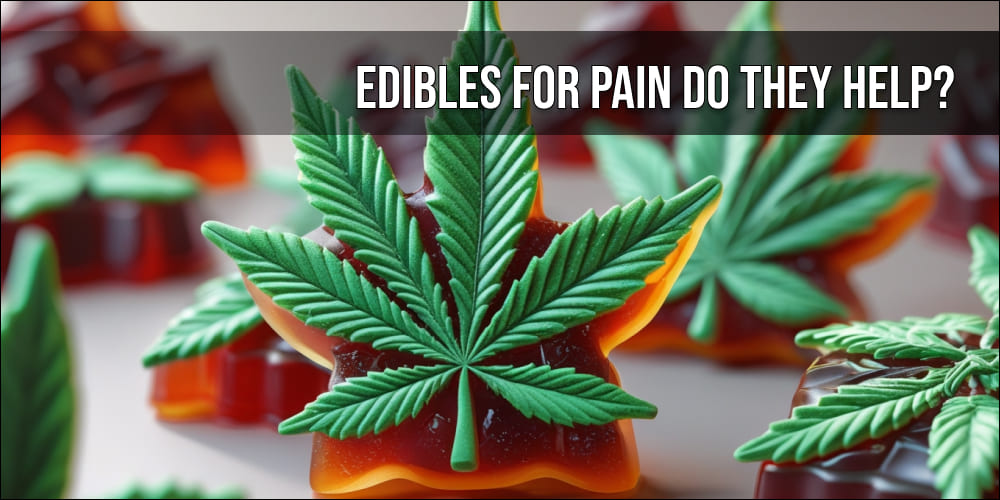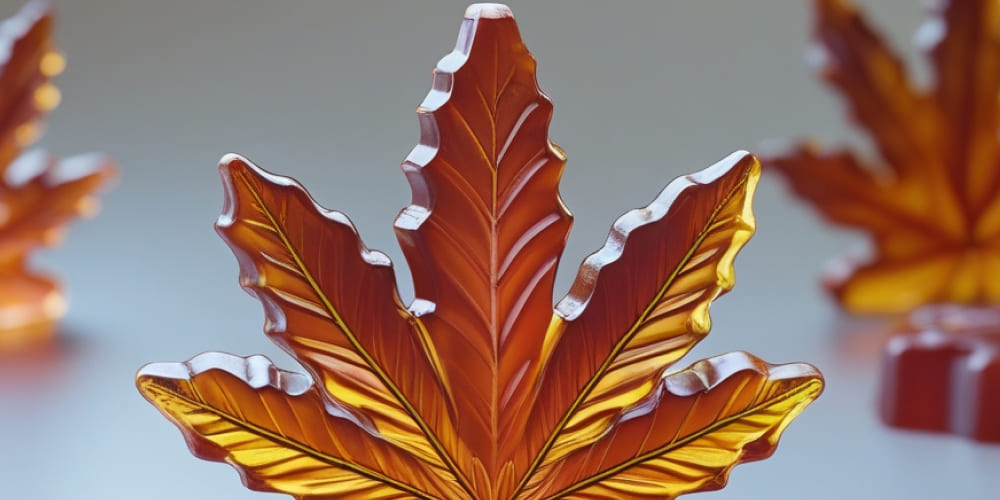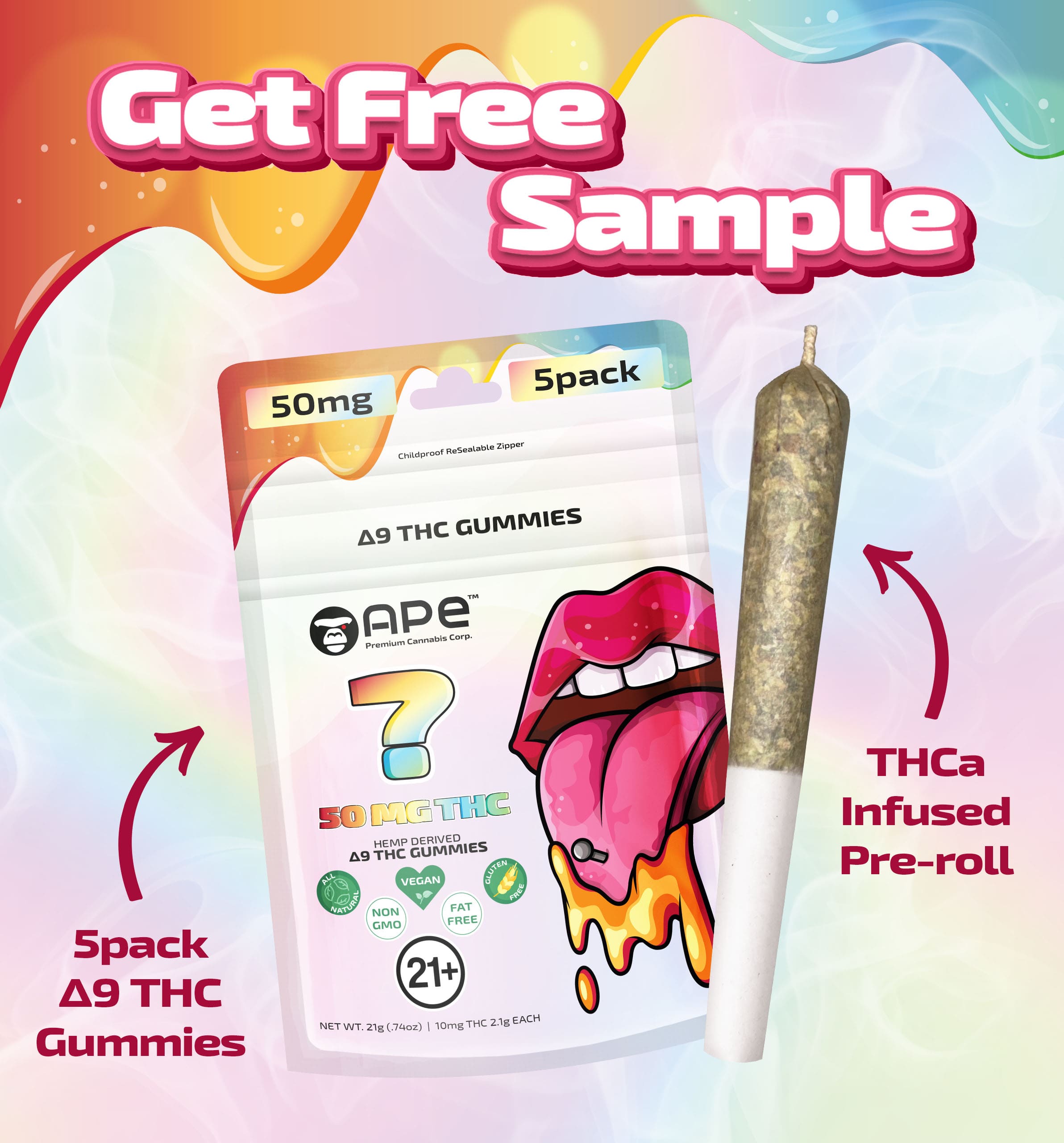Edibles For Pain Do They Help?

When it comes to finding effective relief for chronic pain, more and more people are turning to cannabis, with edibles for pain becoming an increasingly popular option. As the world of medical cannabis expands, many are looking at these infused food products as a way to manage pain without relying on traditional pharmaceuticals. But the question remains: do edibles for pain truly work? With the growing number of cannabis-infused edibles on the market, it’s worth exploring how they work, their benefits, and what to expect when using them for pain management.
Understanding Cannabis Edibles
Cannabis edibles are foods or drinks that are infused with cannabis extracts, usually in the form of THC (tetrahydrocannabinol) or CBD (cannabidiol). These edible products come in many forms, such as gummies, chocolates, cookies, and even beverages, making it easy to incorporate them into your routine. Unlike smoking or vaping cannabis, which delivers effects almost immediately, edibles take longer to kick in—sometimes up to two hours—but their effects tend to last much longer, making them an appealing option for managing persistent or chronic pain.
When you consume cannabis through edibles, the active compounds are processed by the liver, which converts them into a more potent form of THC. This process explains why the effects of edibles can feel stronger and more prolonged, which is a key benefit for those seeking sustained relief from pain.
How Do Edibles for Pain Work?
Cannabis works by interacting with the body’s endocannabinoid system (ECS), which helps regulate functions such as mood, pain perception, and inflammation. The two main compounds found in cannabis, THC and CBD, have different effects on this system. THC is known for its psychoactive properties and is responsible for the “high” that many experience, but it also has powerful pain-relieving properties. On the other hand, CBD doesn’t produce a high but has been shown to be effective in reducing pain and inflammation, making it a valuable option for those who wish to avoid the intoxicating effects of THC.
When edibles for pain are consumed, THC and CBD bind to cannabinoid receptors in the brain and body, helping to manage pain, reduce inflammation, and induce a sense of relaxation. For those who suffer from chronic conditions, this ability to ease pain and discomfort without the need for prescription medications is a game-changer.

Which Types of Pain Can Edibles Help With?
Cannabis edibles are increasingly recognized as an effective remedy for various types of pain. Below are some of the most common pain conditions that edibles for pain can help with:
1. Chronic Pain
Chronic pain, which lasts for several months or even years, can stem from conditions like arthritis, fibromyalgia, or back pain. Many people with chronic pain find that cannabis edibles help manage their symptoms, thanks to the anti-inflammatory and analgesic properties of THC and CBD. Unlike prescription pain medications, which can lead to dependency and other side effects, cannabis offers a natural alternative for those seeking long-term relief.
2. Neuropathic Pain
Neuropathic pain occurs when the nerves are damaged, often causing burning, stabbing, or shooting sensations. This type of pain can result from conditions such as diabetes, multiple sclerosis, or chemotherapy treatments. Edibles for pain, particularly those containing CBD, may help by reducing nerve inflammation and soothing the pain signals transmitted by damaged nerves.
3. Arthritis Pain
Arthritis, whether rheumatoid or osteoarthritis, leads to joint pain and inflammation. Edibles for pain that contain both THC and CBD can provide much-needed relief, as these compounds work together to reduce inflammation and soothe aching joints. The long-lasting effects of edibles are especially beneficial for those who need consistent pain relief throughout the day.
4. Muscle Pain and Spasms
Muscle pain caused by injury or conditions like multiple sclerosis can be incredibly debilitating. Cannabis edibles are becoming a popular choice for individuals seeking relief from muscle spasms and persistent pain. THC’s relaxing effects can help loosen tight muscles, while CBD’s anti-inflammatory properties work to reduce swelling and discomfort.

Do Edibles for Pain Really Help?
The answer is yes—edibles for pain can help, but their effectiveness can vary from person to person. Some people find significant relief from chronic pain using cannabis edibles, while others may not experience the same level of comfort. There are a few important factors that can influence how well edibles for pain work:
1. Dosage
One of the most important factors when using edibles for pain is finding the right dosage. Since edibles take longer to take effect (sometimes up to two hours), it can be easy to take more than necessary if you’re not patient. Starting with a low dose, such as 5-10mg of THC, is recommended, and you can gradually increase the dosage until you find the right balance. Finding your optimal dose is essential for avoiding unwanted side effects like dizziness or sedation.
2. Type of Cannabis Strain
The type of cannabis used in the edible also plays a significant role. Indica strains are often favored for pain relief due to their calming and sedative effects, which can help manage muscle spasms and inflammation. Sativa strains, while more energizing, may also provide some pain relief but are better suited for daytime use. Hybrid strains, which combine both indica and sativa properties, can offer a balanced effect for managing pain while remaining active throughout the day.
3. Individual Tolerance
Everyone’s body reacts differently to cannabis, and factors like your individual tolerance and metabolism can affect how edibles for pain work. Some people have a high tolerance and may require a larger dose, while others may experience relief with a smaller dose. It’s important to listen to your body and adjust your intake as needed.
4. Type of Pain
The type of pain you’re experiencing is crucial in determining how effective edibles for pain will be. While they can be highly effective for chronic pain, inflammation, and nerve-related pain, they may not provide instant relief for acute pain, like an injury. Edibles tend to work best for ongoing or persistent discomfort.

How to Use Edibles for Pain Relief
If you’re considering using edibles for pain relief, here are some practical tips for maximizing their benefits:
- Start Slow When first trying cannabis edibles, it’s important to start with a low dose (around 5-10mg of THC) and wait at least two hours before deciding whether to take more. Edibles are slower to take effect than smoking or vaping, and overconsumption can lead to uncomfortable side effects like dizziness or anxiety.
- Choose the Right Product With the variety of cannabis edibles available, it’s essential to choose the right one for your needs. If you want to avoid the intoxicating effects of THC, opt for a CBD-only edible. If you’re looking for stronger pain relief, a combination of THC and CBD is often the most effective.
- Consider Combining Edibles with Other Therapies Cannabis edibles can be highly effective when combined with other pain management strategies, such as physical therapy, acupuncture, or exercise. Always consult with a healthcare provider to ensure a holistic approach to pain relief.
- Follow Legal Guidelines Before purchasing and consuming edibles for pain, make sure that cannabis is legal in your area. Always buy from licensed dispensaries to ensure that the products are properly regulated and tested for quality and safety.

Additional Considerations When Using Edibles for Pain
While edibles for pain can be highly effective, it’s essential to consider a few additional factors to ensure a safe and optimal experience. Cannabis can have varying effects on different people, and what works for one individual may not work the same for another. Here are some extra tips to help you get the most out of edibles for pain:
1. Be Patient and Mindful of Tolerance
One of the key things to keep in mind when using cannabis edibles for pain is that they can take time to produce results. Unlike smoking or vaping, which provides almost immediate effects, edibles must first pass through your digestive system and liver before their active ingredients are released. This process can take anywhere from 30 minutes to two hours, and some people might need more time to experience the full effects. If you don’t feel relief after the first dose, it’s essential not to over-consume—wait for at least two hours before considering another dose.
2. Start with a Balanced Product
For those new to edibles for pain, starting with a product that contains both THC and CBD can offer a balanced effect. While THC helps with pain relief, CBD adds additional anti-inflammatory benefits and may reduce the psychoactive effects of THC. Combining these compounds can offer a smoother, more manageable experience, especially for those who are sensitive to THC’s intoxicating effects.
3. Track Your Experience
If you’re new to edibles for pain, it can be helpful to keep a journal of your experiences. Tracking factors such as dosage, the time it took for the effects to kick in, the intensity of relief, and any side effects can help you adjust your consumption methods over time. By staying organized and informed about your experiences, you’ll be better equipped to find the most effective solution for managing your pain.
By considering these factors, edibles for pain can be a safe and effective solution for managing discomfort, offering a natural alternative to traditional pain relief medications.
Cannabis edibles have quickly gained popularity as a natural alternative for pain management. Whether you’re dealing with chronic pain, neuropathic pain, arthritis, or muscle discomfort, edibles for pain can provide long-lasting relief without the side effects often associated with prescription medications. While their effectiveness varies based on factors such as dosage, cannabis strain, and individual tolerance, many people find edibles to be a valuable tool in managing pain.
If you’re new to cannabis, start with a low dose and be patient, as the effects can take time to kick in. As with any pain management method, it’s essential to do your research and, when in doubt, consult with a healthcare professional to determine if cannabis edibles are the right choice for your pain relief needs.






















